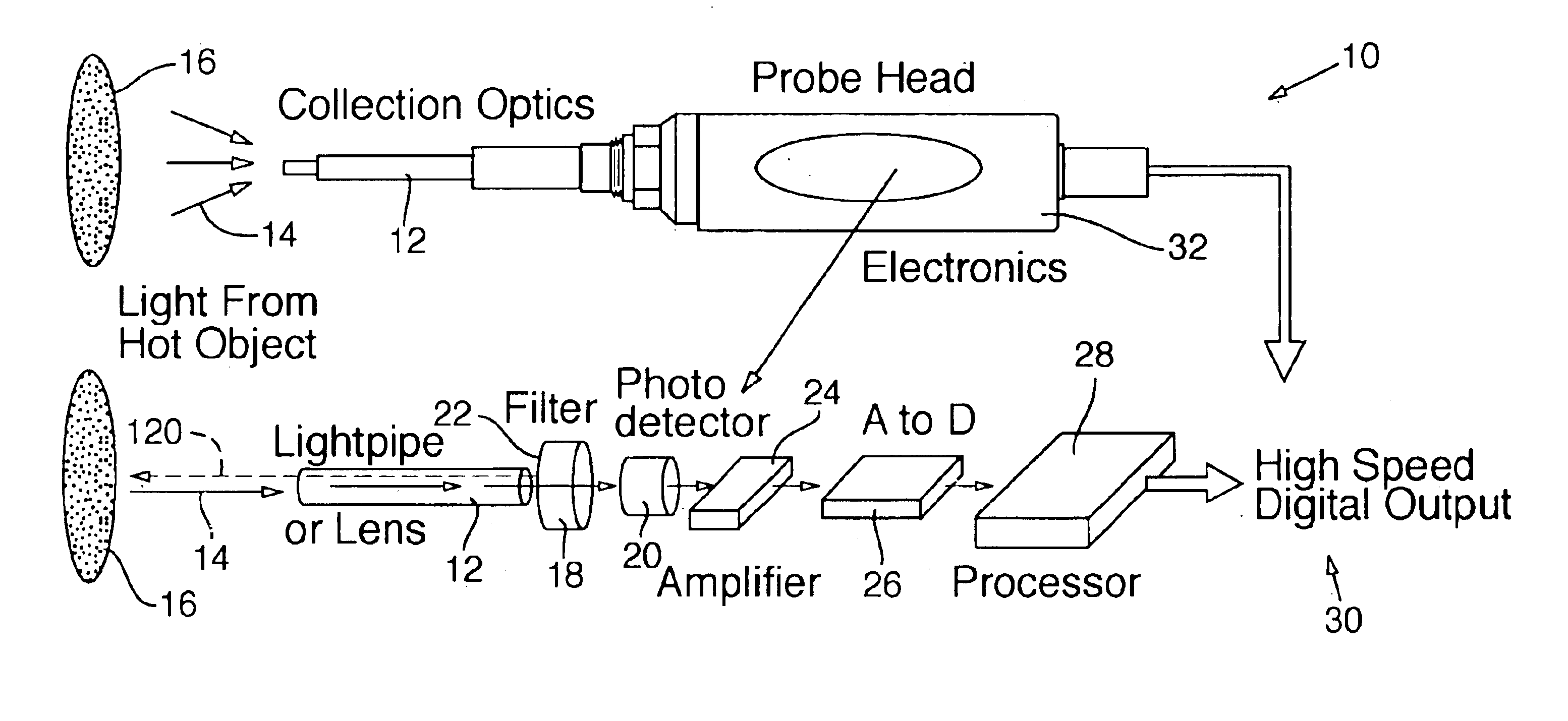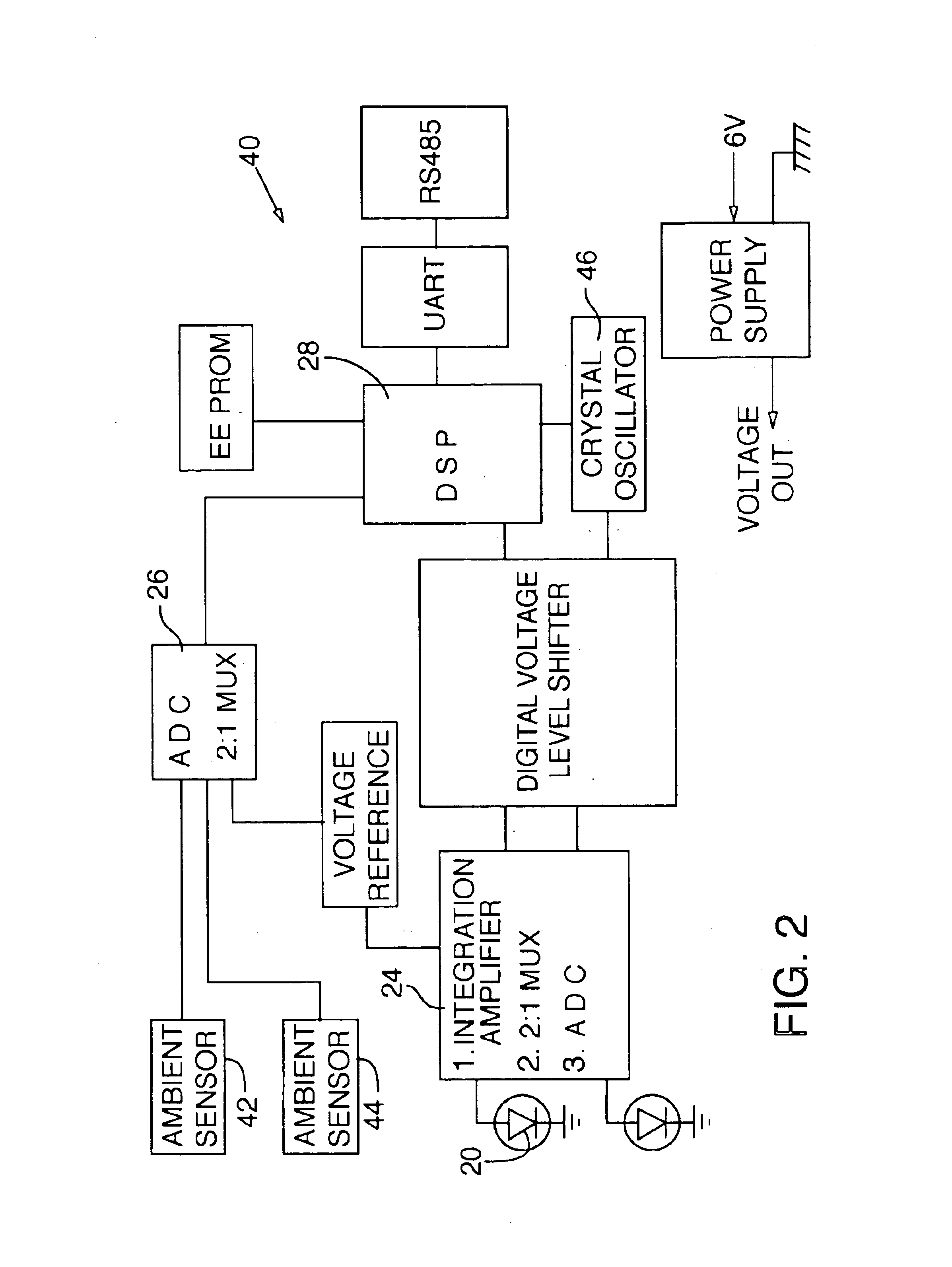Radiometric temperature measurement system
a temperature measurement system and radiometric technology, applied in heat measurement, optical radiation measurement, instruments, etc., can solve the problems of reducing fabrication yield, reducing the accuracy of wafer-to-wafer temperature repeatability, and reducing the cost of manufacturing, so as to improve background radiation blocking, improve the accuracy of temperature measurement, and reduce optical losses
- Summary
- Abstract
- Description
- Claims
- Application Information
AI Technical Summary
Benefits of technology
Problems solved by technology
Method used
Image
Examples
Embodiment Construction
FIG. 1 shows a radiometric system 10 of this invention, which includes collection optics 12 for acquiring emitted radiation 14 from a target medium, such as an object 16. Collection optics 12 direct radiation 14 to an optional wavelength selective filter 18 and a photo detector 20. Collection optics 12 may alternatively include rigid or flexible fiber optic light pipes and / or a lens system for measuring the temperature of predetermined areas on object 16. The target medium may include gases, plasmas, heat sources, and other non-solid target media.
Optional wavelength selective filter 18 selects which wavelengths of radiation 14 are measured. A preferred embodiment of filter 18 includes a hot / cold mirror surface 22 for reflecting unneeded wavelengths of radiation 14 back toward object 16. Skilled workers will recognize that filter 18 and hot / cold mirror surface 22 should be housed to maintain them in a clean and dry condition.
Photo detector 20 converts radiation 14 into an electrical ...
PUM
 Login to View More
Login to View More Abstract
Description
Claims
Application Information
 Login to View More
Login to View More - R&D
- Intellectual Property
- Life Sciences
- Materials
- Tech Scout
- Unparalleled Data Quality
- Higher Quality Content
- 60% Fewer Hallucinations
Browse by: Latest US Patents, China's latest patents, Technical Efficacy Thesaurus, Application Domain, Technology Topic, Popular Technical Reports.
© 2025 PatSnap. All rights reserved.Legal|Privacy policy|Modern Slavery Act Transparency Statement|Sitemap|About US| Contact US: help@patsnap.com



